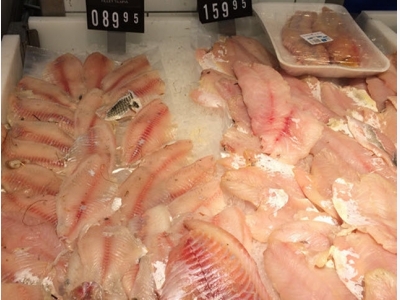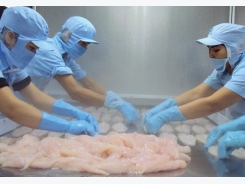Vietnam fails to score big in Egyptian fish market

Consumption of fish is a traditional and vital component of the Egyptian diet, and a primary source of inexpensive animal protein for the growing population, said Vietnam Trade Counsellor Pham The Cuong recently.
Fish and fisheries in Egypt are expected to produce 1.4 million metric tons of product in 2017, principally seabass, tilapia and catfish, said Mr Cuong, adding that 40% of it is allocated for domestic consumption and 60% for export to EU countries and Gulf states.
Mr Cuong noted fish and fishery imports of Egypt for the year are estimated at 215 thousand metric tons and consist primarily of mackerel, sardines and other. Most imports are made around the major holidays, such as Ranja.
Imports of frozen basa and salmon are also made on a more regular year-round basis to feed the poverty-stricken people in the country.
Mr Cuong pointed out that fish consumption in the country linking northeast Africa with the Middle East has long been characterized by a traditional preference for wild caught fresh fish.
The per capita consumption of fish in Egypt is 20.5kg compared to a global per capita of 19.3kg.
However, with the development in cold storage facilities over the past decade, and improved distribution channels, frozen fish is becoming a more acceptable alternative for a limited number of Egyptian consumers.
Another important influence in the fish and seafood market in Egypt is price, said Mr Cuong. As an example, he said tilapia is indigenous to the Nile and has been a popular feature of Egyptian cuisine since the Pharaonic times.
However, nowadays with the prices of wild caught fish and alternative sources of meat and poultry soaring— cooks throughout the country are becoming more amenable to farm raised seafood alternatives.
Particularly high quality farm raised tilapia, which because of its health benefits and place in Egyptian culture can be found street side and in high end restaurants as well as households throughout the country.
Fish and fishery exports of Vietnam to Egypt have been inconsequential over past years, Mr Cuong underscored. According to official statistics they went from US$20 million in 2007 to US$64.2 million in 2015 and then dipped to US$46 million last year.
The Trade Counsellor said pangasius catfish and Nile perch are two species which could potentially compete directly with tilapia in the Egyptian (and international market) if Vietnamese farmers would focus on food safety and produce quality fish.
Vietnamese farmers and exporters should also take note that most fish in Egypt is not sold in supermarkets or live markets like it is in Vietnam.
The overwhelming majority is sold in specialized fish retail markets owned and operated by individuals or businesses that exclusively sell fish products. Most but not all retailers appear to be men, with perhaps around 10-15% being women.
Many of them operate in specific market areas dedicated for groups of retailers. For example, in Cairo there are several specific retail fish markets such as Moneab, Zaytoun and Embaba and Sayeda Zaneb, Waely, Faisal and Maadi.
Most of these retailers sell a variety of distinct species including tilapia, mullet and catfish, and virtually all sales of domestic fish (wild and farmed) are in whole fresh form.
So, if Vietnamese want to score big in the Egyptian market they need to get their foot in the door of these specialized fish markets and not focus solely on supermarkets, Mr Cuong concluded.
Related news
Tools

Phối trộn thức ăn chăn nuôi

Pha dung dịch thủy canh

Định mức cho tôm ăn

Phối trộn phân bón NPK

Xác định tỷ lệ tôm sống

Chuyển đổi đơn vị phân bón

Xác định công suất sục khí

Chuyển đổi đơn vị tôm

Tính diện tích nhà kính

Tính thể tích ao



 Export turnover to Switzerland sharply increased
Export turnover to Switzerland sharply increased  90% of pangasius catfishes in the US market…
90% of pangasius catfishes in the US market…